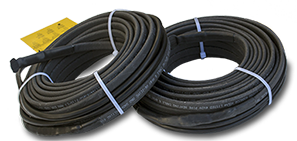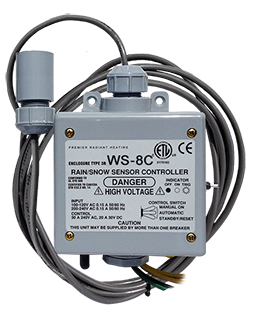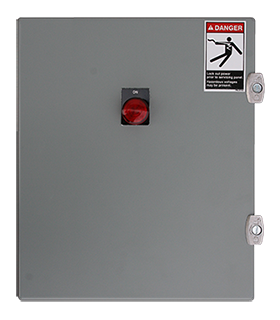RoofHeat Panels
Heating Roof Edges with Heat Cable Channeled in Aluminum Panels
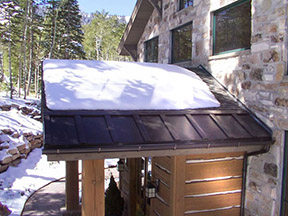 Attractive roof deicing panels feature self-regulating heat cable that is channeled into
aluminum panels to provide maximum heat transfer. Typically used to retrofit existing roofs
with radiant heat, the roof heating panels can be more expensive than other roof deicing
systems, but extremely effective in melting snow and ice from roof edges.
Attractive roof deicing panels feature self-regulating heat cable that is channeled into
aluminum panels to provide maximum heat transfer. Typically used to retrofit existing roofs
with radiant heat, the roof heating panels can be more expensive than other roof deicing
systems, but extremely effective in melting snow and ice from roof edges.
The aluminum panels are powder-coated with a durable finish in a wide variety of colors to complement the aesthetics of your home. When mounted to your roof eaves and/or valleys, the roof heating systems efficiently melt ice and snow in those areas, enhancing safety and reducing the risk of winter damage caused by ice dams.
Existing metal roofs can also be retrofitted by placing the aluminum roof heating panels directly on top of the old roof. The aluminum alloy panel is in direct contact with the self-regulating heat cable at all times, so the heat is conducted efficiently throughout the panel to prevent any snow or ice build up at the edge of the roof, eliminating ice dams and dangerous icicles.
Roof Heating Panel Illustrations
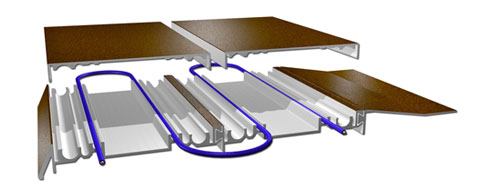
|
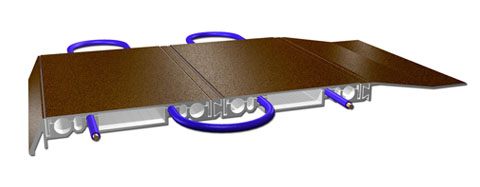
|
Roof heating panels feature self-regulating heat cable that is installed in an attractive powder-coated aluminum panel to efficiently heat the roof edges.
Roof Deicing System Components
|
Heating Element The heating element features energy efficient self-regulating heat cable. The cable is routed through the channels provided within the aluminum panel to efficiently radiate heat throughout the panel and effectively melt snow and ice from the roof. Roof heating panels are durable, powder coated and available in a variety of colors. The powder coating provides an attractive, weatherproof finish for your roof that not only looks good but provides a very effective means for preventing ice dams and icicles from forming. |
|
Activation Device (Snow Sensor) Outdoor temperature sensors are intended for use on roofs and in roof gutters, while moisture sensors and wire sensors are normally fitted inside gutters where the melted runoff collects. The actual number and placement depends on the size and nature of the particular roof heating installation. (In addition to aerial mounted snow sensors, pavement mounted sensors are also available. These are more commonly used for heated driveway systems.) The WS-8C is a proven industry leader that features a remote sensor that can be installed in the ideal location to detect temperature and precipitation. When the snow sensor detects a specific temperature and accompanying precipitation, it automatically signals the contactor panel to activate the system. Power is then sent to the heating cables just as the storm hits, and the system then shuts off after the storm. The system is proven reliable and energy efficient, making roof deicing systems a trusted, maintenance free solution for protecting against roof and water damage, as well as enhancing safety by eliminating large icicles and falling sheets of ice. |
|
Contactor Panel Each roof heating system is configured differently to accommodate the specific needs of the homeowner. Contactor panels are used for radiant snow melting systems and are typically mounted in the garage. The contactor box can also be purchased with ground fault equipment protection (GFEP). Having GFEP contained within the contactor panel eliminates the need for tracking down and purchasing expensive GFEP units. This also eliminates the stress and added expense for contractors/electricians who have had to find GFEP separately for snow melting system installations in the past. Upon receiving a signal from the activation device (such as the WS-8C), the contactor panel then sends power to the heat cable, which quickly warms the roof to prevent snow and ice buildup. |

